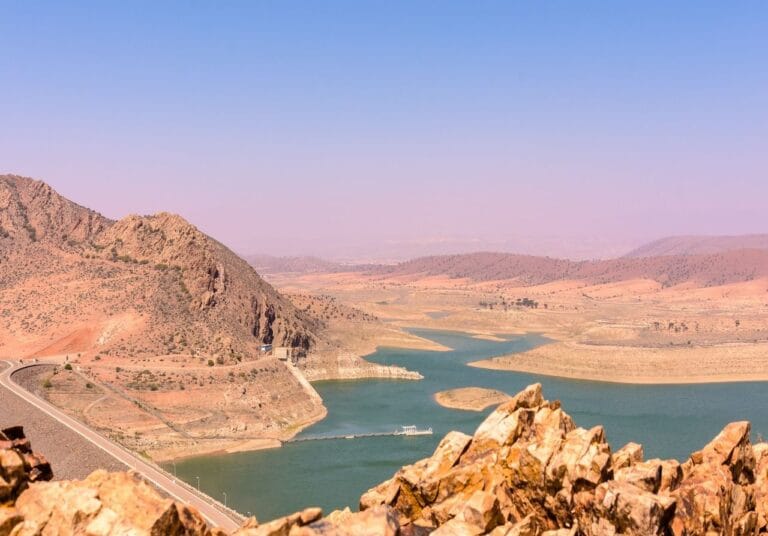As summer is in full swing, the Moroccan government once again sounds the alarm about the country’s water situation. According to data as of July 7, 2025, the filling rate of national dams does not exceed 37.4%, which is approximately 4.3 billion cubic meters of stored water. This concerning situation was addressed by the head of government, Aziz Akhannouch, during a meeting of the steering committee of the National Drinking Water Supply and Irrigation Program 2020-2027 (PNAEPI 20-27).
### A High-Tension Summer Season
Despite some signs of improvement compared to previous months, the level of reserves remains insufficient to ensure a calm supply, especially during the summer, a period of high consumption. The government therefore emphasizes the need for responsible water management, calling for awareness campaigns and to continue emergency measures, especially in particularly vulnerable rural areas.
The meeting in Rabat allowed for an update on the progress of the various projects of the PNAEPI, in accordance with royal directives regarding water sovereignty.
### Major Projects and Interconnection Initiatives
Several key infrastructures are underway, including two interconnection projects between basins: one between Sebou and Bouregreg, and the other between the dams of Dar Khrofa and Oued Makhazine. These hydraulic connections are strategic for rebalancing water availability between surplus and deficit regions.
Between 2021 and 2025, eight major dams have been put into service, thus strengthening the national storage capacity. At the same time, the revision of programming for small dams and medium reservoirs in high rainfall areas has been approved, in order to better align investment efforts with climatic realities.
### Desalination and Water Reuse: Future Directions
The government is also focusing on accelerating desalination projects, with a targeted capacity of 1.7 billion m³ per year by 2030. These facilities are essential, particularly to support coastal regions where demographic and economic pressure is high.
Another lever is the valorization of treated wastewater for agricultural purposes, a major focus to alleviate demand for conventional water, especially in the agricultural sector, the primary national consumer.
### Required Coordination Between Agriculture and Water
During this working session, Aziz Akhannouch urged the relevant ministries and institutions to remain fully mobilized for a rigorous implementation of the program. He particularly stressed the need for better coordination between agricultural policy and water policy, in a context of resource scarcity.
Several key ministers were present at the table – Abdelouafi Laftit, Nizar Baraka, Ahmed El Bouari, Fouzi Lekjaa – as well as the Director General of ONEE, Tarik Hamane. A strong signal that the issue of water is now at the heart of the state’s strategic priorities.
In the face of intensifying climate challenges, Morocco is racing against time to secure its water resources. The course is set, but its success will depend on the collective and sustainable commitment of all stakeholders.


